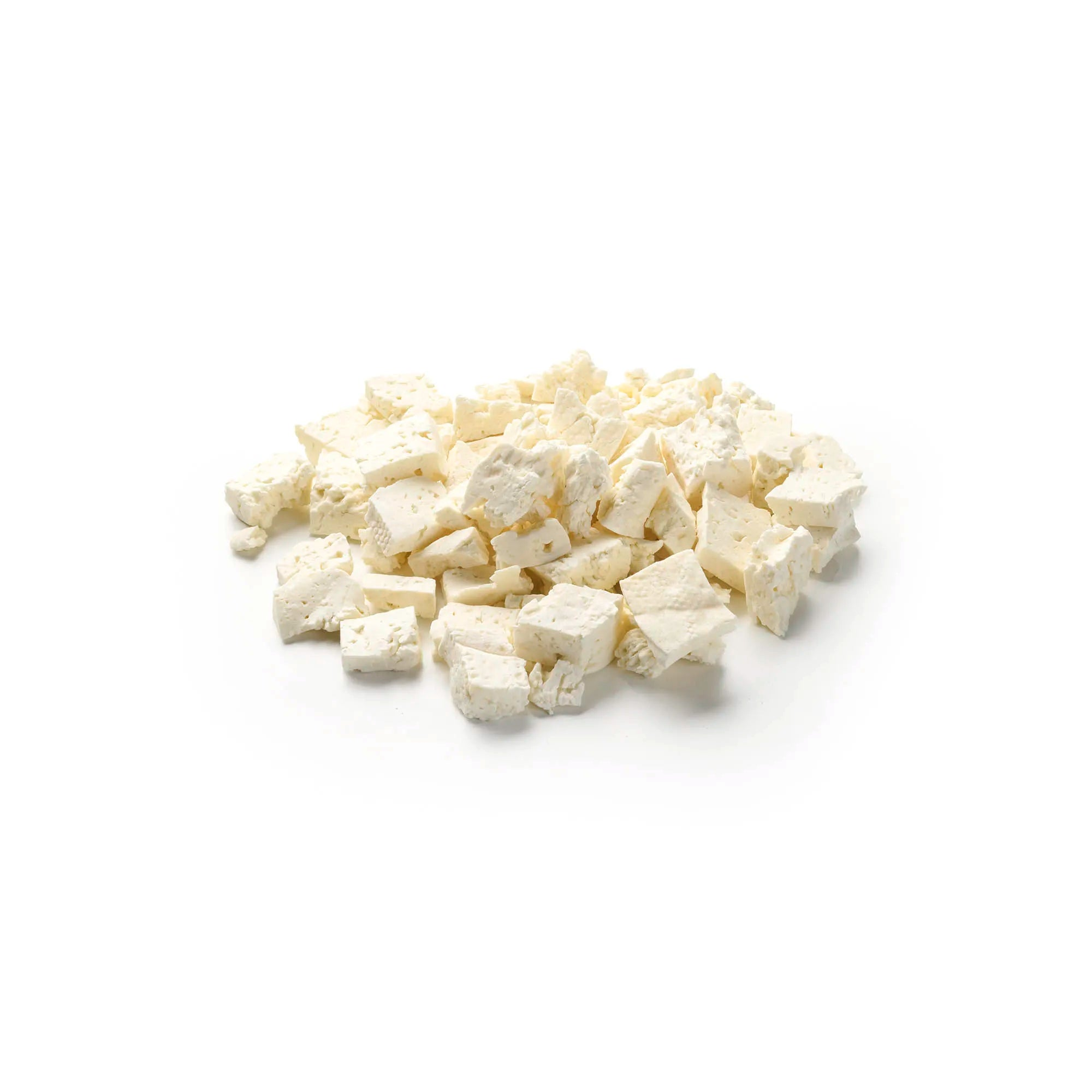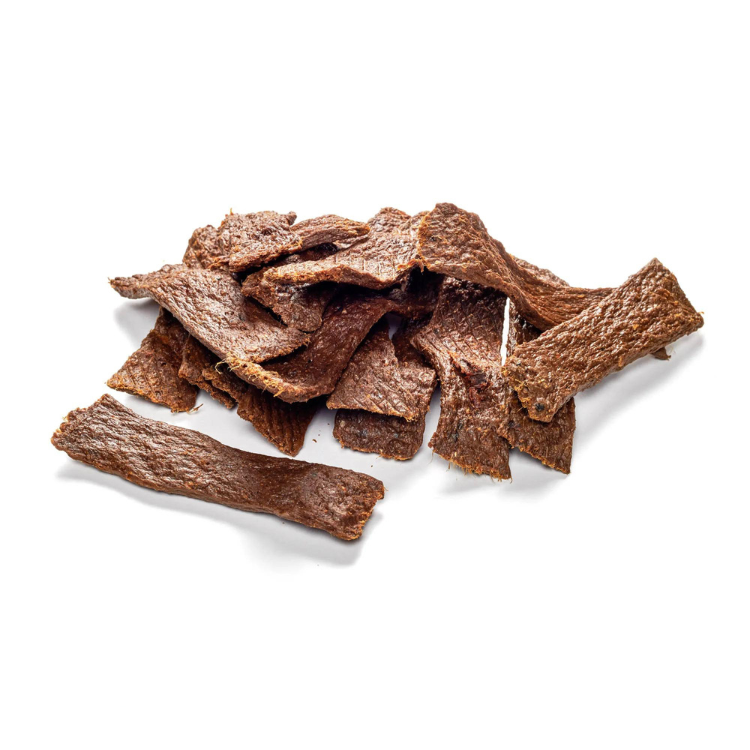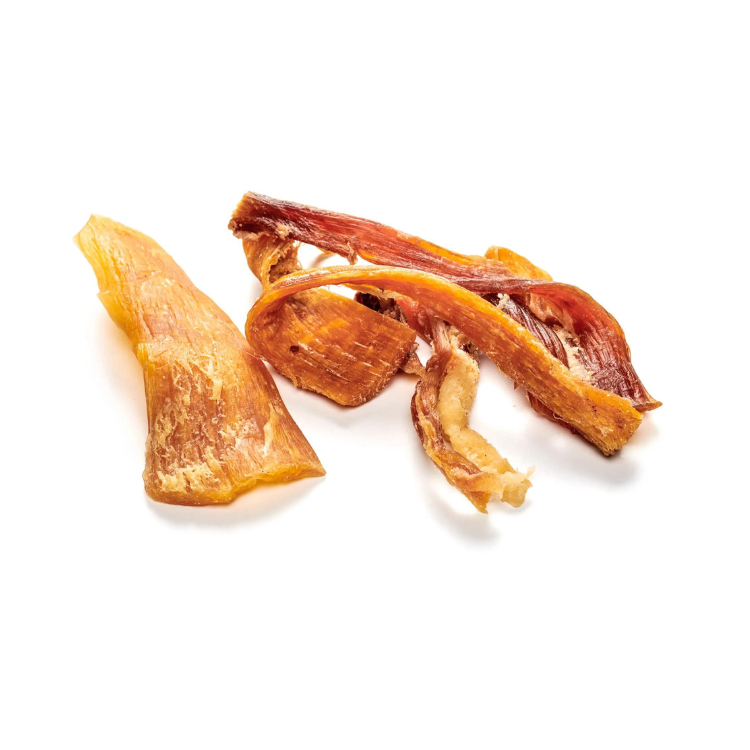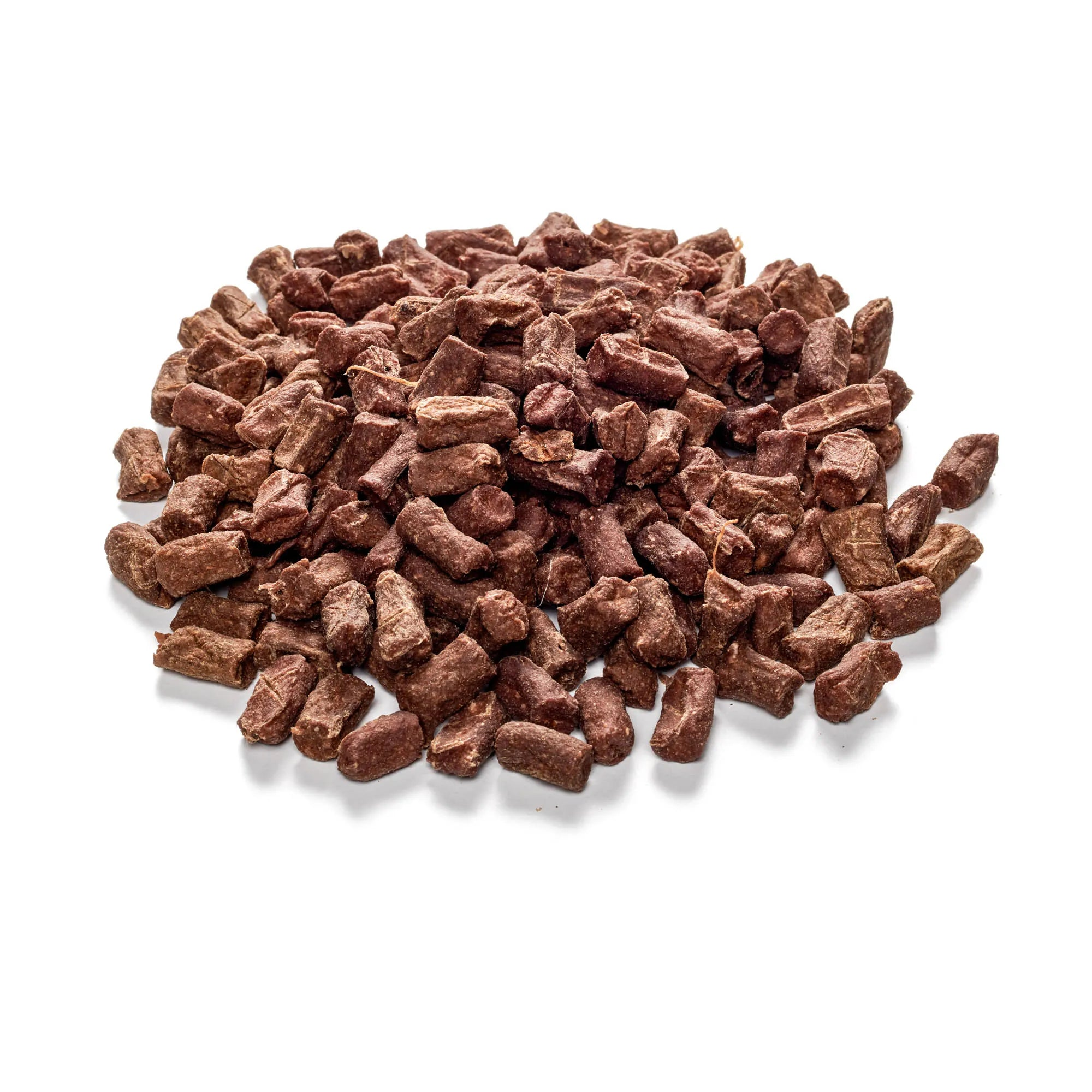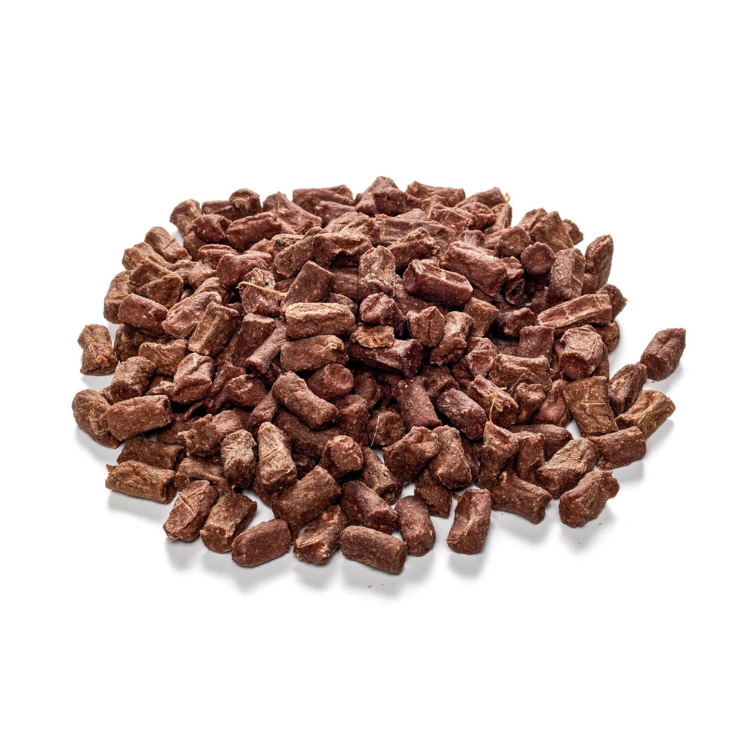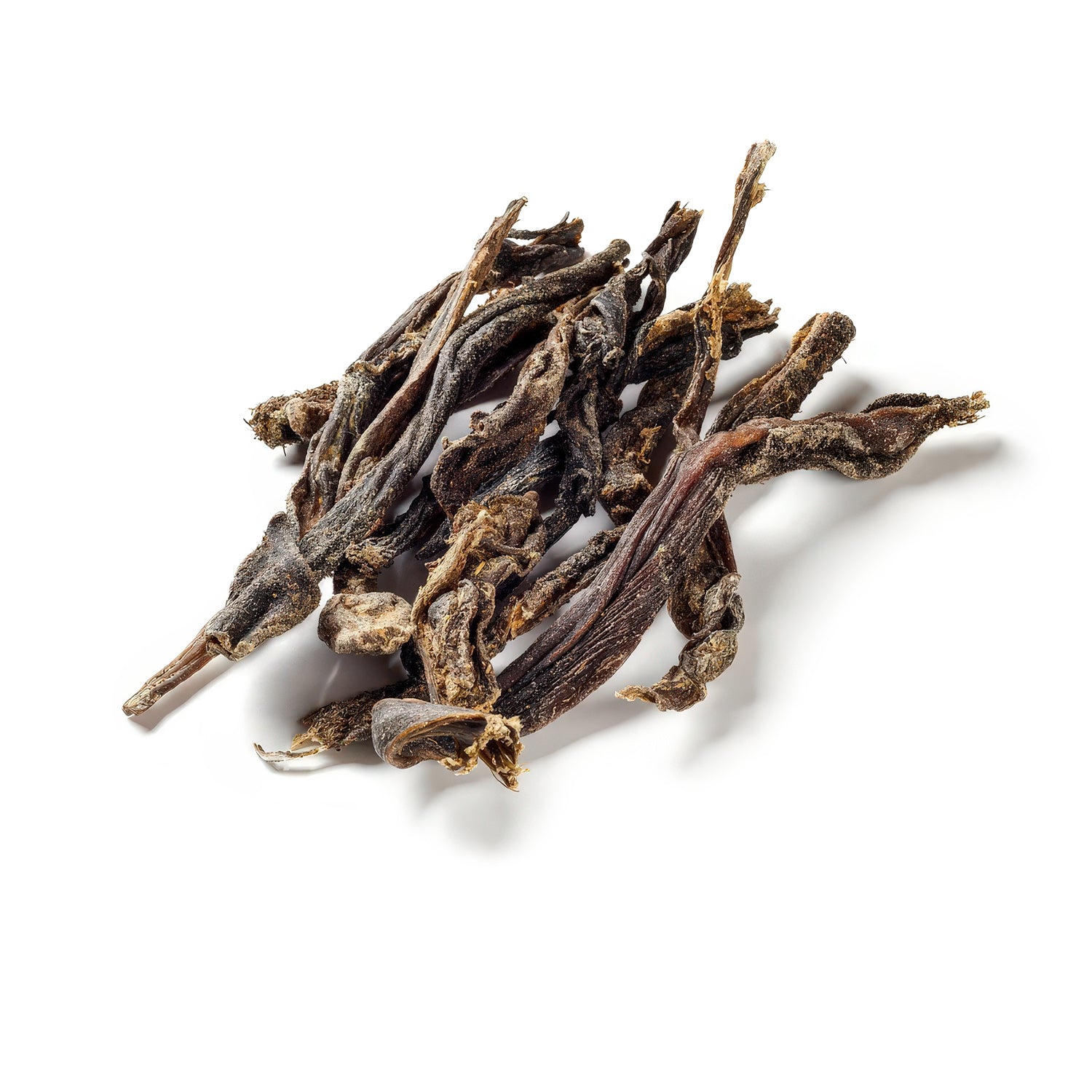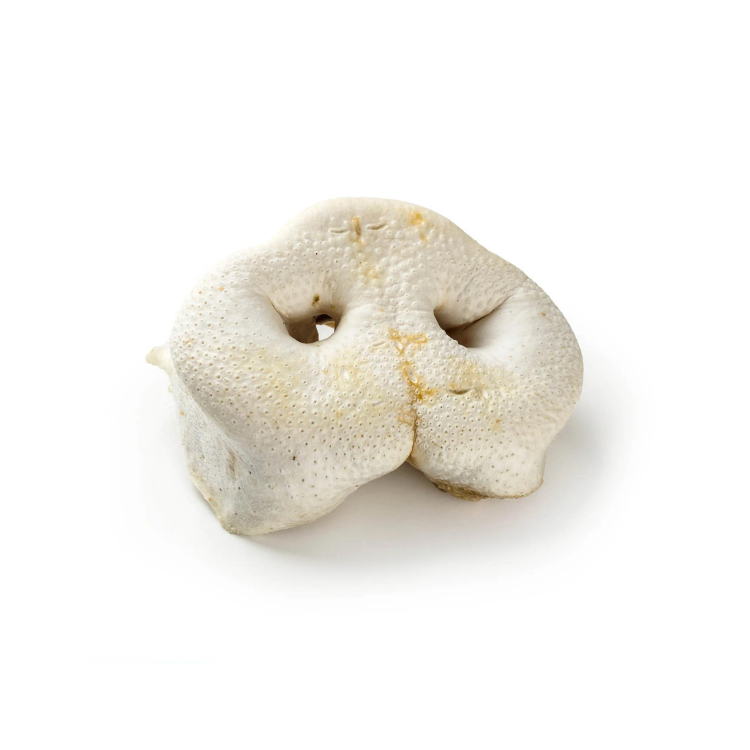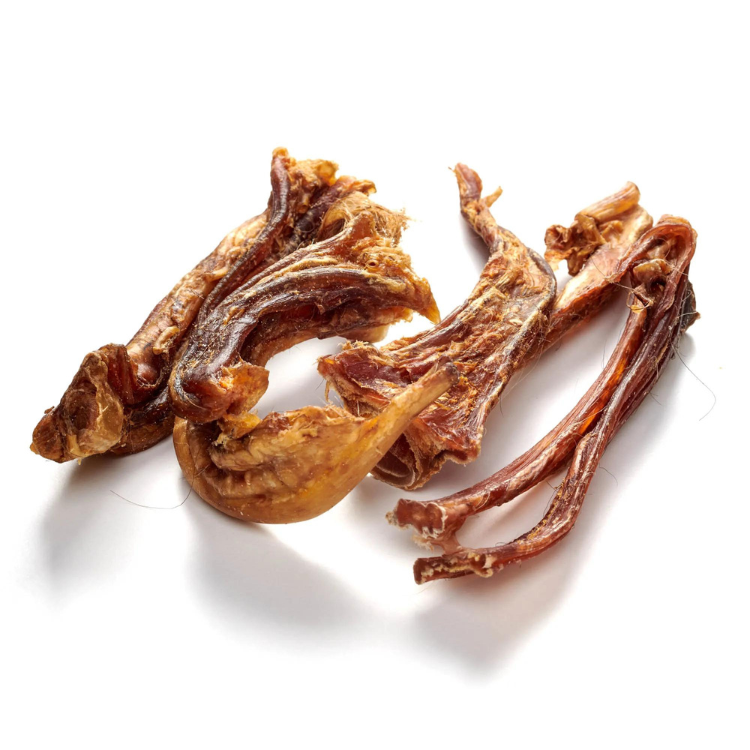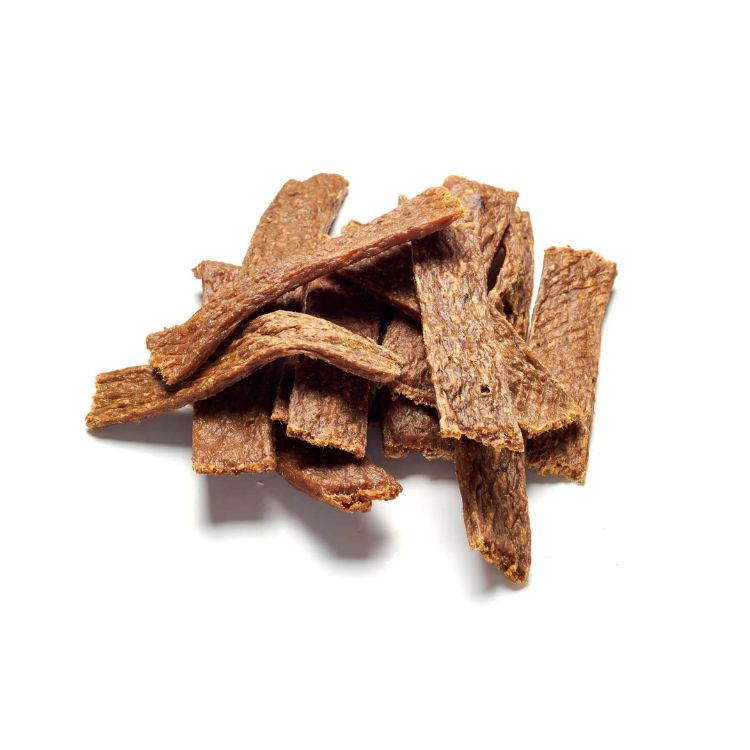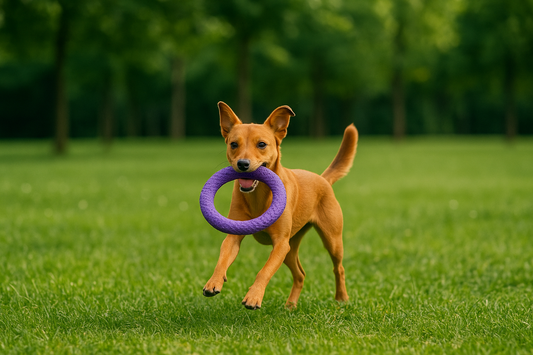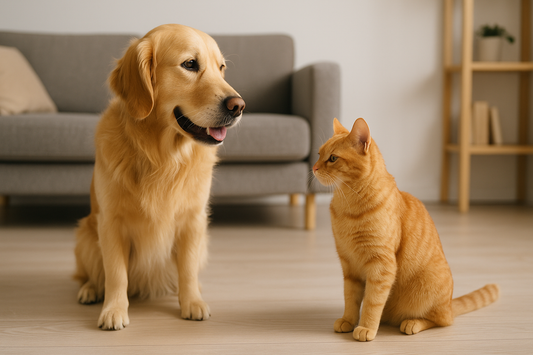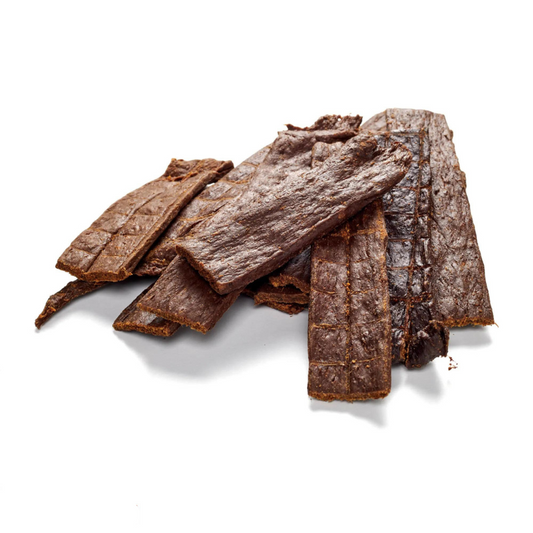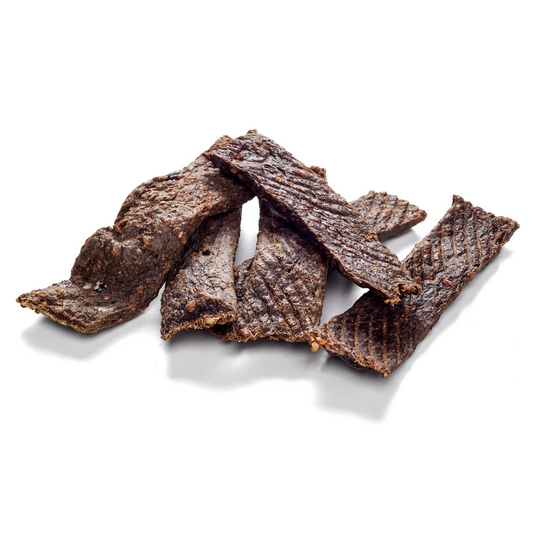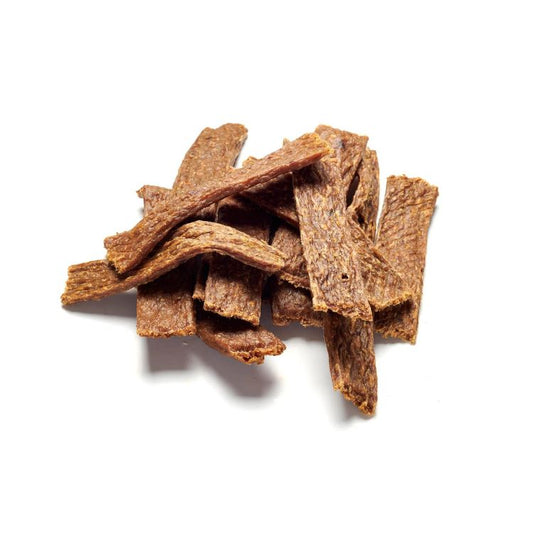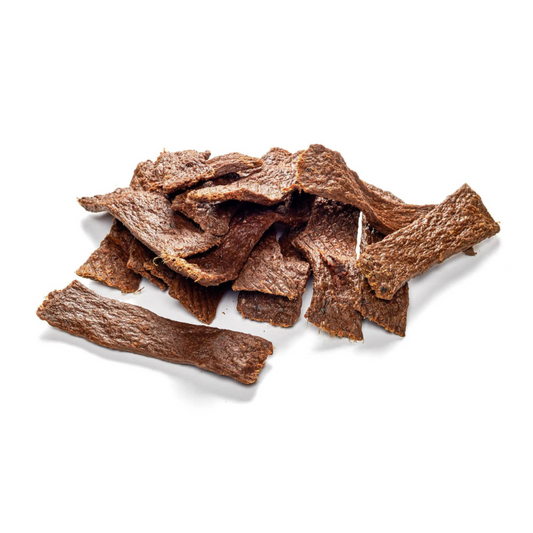
Irish wolfhound
Share
The Irish Wolfhound is a long-serving hunting dog that was used in medieval Ireland to hunt wolves, deer and bears. The FCI breed standard describes the character of the Irish Wolfhound as follows: "A sheep at home, but a lion on the hunt."
Content: Irish Wolfhound
- profile
- Special features
- Nutrition
- Health and care
- The right accessories
- Origin & History
- Conclusion
Delicious chews for your faithful companion now available!
Irish Wolfhound - Profile
- Character: Benevolent, majestic, calm
- Size: Very large
- Height: 71-80 cm
- Weight: 40-55 kg
- Life expectancy: 6-10 years
- Coat type: Long hair, rough and wiry
- Colour: grey, brindle, red, black, pure white, fawn
- Special features: One of the largest dog breeds
- FCI group: Greyhounds, rough-haired greyhounds
Irish Wolfhound - Special Characteristics
The Irish Wolfhound is a very large and slender dog. It has long, wiry hair and comes in many different colors. Its coat color ranges from gray, brindle, white and red to fawn and pure black. The wiry hair is particularly pronounced on the lips and above the eyes.
The friendly, good-natured dogs radiate a stoic calm and calmly do everything that is asked of them. The dogs are very adaptable and often endure pain without showing any signs of it. This means that by the time you notice something, it is often too late to treat illnesses. Greyhounds are fast hunters and can be merciless. However, with people, the dogs are very sensitive and patient. Aggression is foreign to these people-lovers.
With consistent guidance, the dogs are easy to train and can be easily controlled by an owner who knows how to handle dogs. But be careful! This dog is not for beginners. Their nature makes them unsuitable for kennel keeping.
Irish Wolfhound - What should be considered regarding nutrition?
For the Irish Wolfhound, a diet with a high meat content of around 70% is best. A large amount of fruit and vegetables should also be fed. The grain content should under no circumstances exceed 10 percent. Greyhounds can be fed both wet and dry food. Biologically appropriate raw food ( BARF ) is also suitable for feeding large dogs, provided the quality of the raw food is sufficiently high. You should consider whether you can afford the cost of such a diet. A balanced diet that is based on the dog's age, weight and activity level is important. Wolfhounds need less food than you would think. If there are any deficiencies, you should always consult a veterinarian and discuss the dog's diet with them.
High-quality dog chews for your faithful companion can be found here!
Irish Wolfhound - Health and Care
Irish Wolfhounds do not require any special care. However, there are a few things to consider. Their fur should be brushed several times a week and checked for matting. In addition to grooming, checking the eyes, teeth and claws is also part of the regular tasks of a responsible owner. Particular attention should be paid to the ears, which must be regularly cleaned of sebum and deposits to avoid inflammation.
Like many other large dogs, greyhounds are prone to hip dysplasia and arthritis. Climbing stairs should be avoided at all costs. To ensure that the dog can get enough exercise in a species-appropriate manner, you should ensure that it gets enough exercise regularly and can also reach full speed.
You should pay close attention to changes in the dog's movement, weight and behavior. This is the only way to identify and combat potential health problems early enough.
Irish Wolfhound - The right accessories
The following basic equipment is the most important for keeping an Irish Wolfhound: a raised water and food bowl, a dog basket, leash , harness or collar and a first aid kit for dogs. In addition, you need a good brush, which is best made of natural bristles, and a metal comb for removing mats and knots. Remember that you will also need a correspondingly large car for your large four-legged friend.
Tip: Greyhounds have a particularly slim head and can easily free themselves from normal dog collars. There are therefore special collars for greyhound breeds that are significantly wider.
Irish Wolfhound - Origin & History
The history of the Irish Wolfhounds is not entirely clear. Greyhound-type dogs existed on the British Isles as early as the 7th millennium BC. Arabian greyhounds were probably trained for hunting on the British Isles by the Celts. The dogs were increasingly used to hunt wolves and large game. In the Middle Ages, English counties had to keep at least 24 wolfhounds in order to protect farmers' flocks of sheep from predators. Ownership of these valuable dogs was reserved for the nobility. With the invention of firearms and the extinction of wolves, the huge, fast dogs lost importance and were threatened with extinction. Captain GA Graham took on his favorite breed and bred a stable breed under the influence of the Great Dane and Deerhound . The Irish Wolfhound breed has been officially recognized since the 1880s. In the decades that followed, the dogs spread again in Europe and regained some of their reputation.
Conclusion
The Irish Wolfhound is a majestic and benevolent breed whose history stretches back to ancient Ireland. With their friendly character and calmness, they are loving companions. However, training them requires experience and consistency. A balanced diet and regular care are crucial for their health and well-being. Despite their impressive size, they are sensitive and require a lot of love and attention. Overall, Irish Wolfhounds are an asset for experienced dog owners who are aware of the responsibility that comes with this extraordinary breed.
Make your dog happy with our tasty chews!

